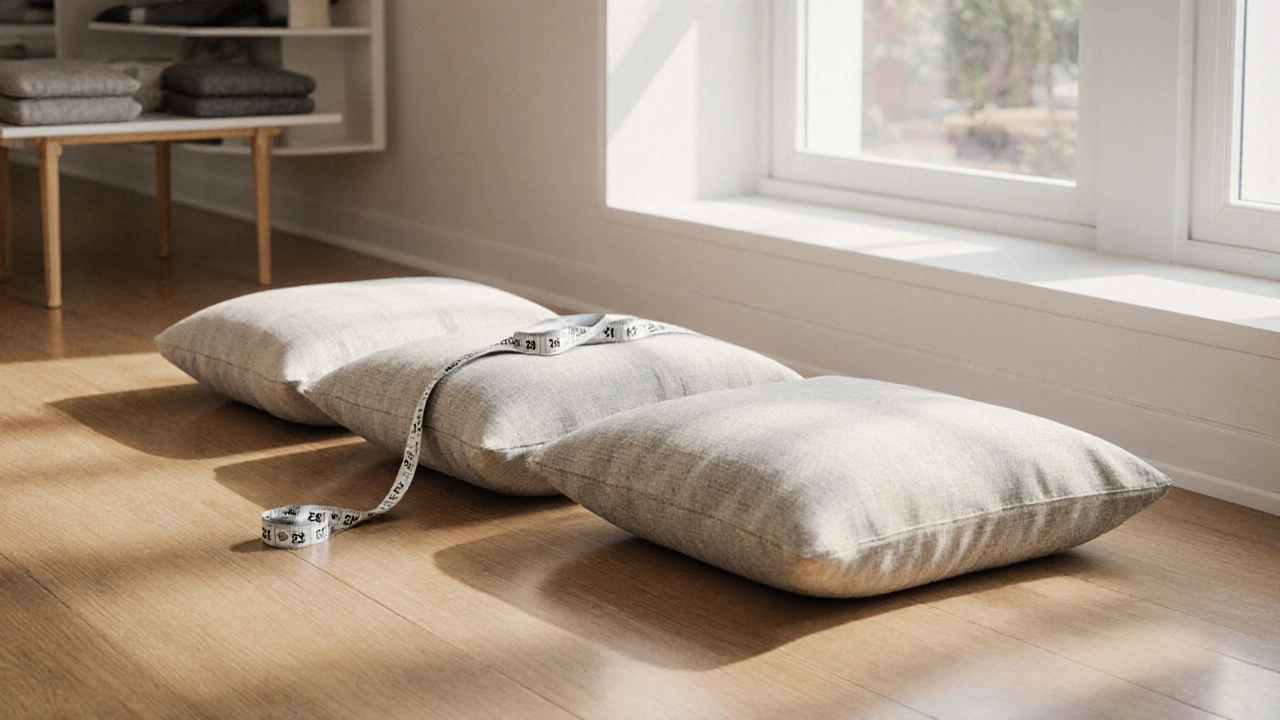Sofa Cushion Dimensions: Find the Right Size for Comfort and Style
When working with sofa cushion dimensions, the exact width, depth and thickness that make a cushion sit properly on a sofa frame. Also known as cushion sizing, it helps you achieve both comfort and visual balance. Related concepts you’ll encounter include scatter cushions, cushion size guide and sofa styling tips.
Understanding sofa cushion dimensions is the first step toward a well‑proportioned seating area. A standard three‑seat sofa often uses cushions that are 24–28 inches deep and 18–22 inches tall, but the exact numbers shift when you add armrests, backs or a deep‑seat design. Measuring your own sofa helps you avoid the common mistake of buying off‑the‑shelf cushions that look good in the store but sag or slide at home. Grab a tape, note the seat width, cushion height, and the distance between the front edge and the backrest – those three numbers define your cushion footprint.
How Scatter Cushions Influence Overall Proportions
Scatter cushions are the decorative side‑kicks that bring color, pattern, and texture to a sofa. While they’re smaller than the main seat cushions, their dimensions still matter. A typical rule is to use a 16‑inch square for a standard sofa and step up to 20‑inch squares for larger sections. The size of scatter cushions should complement, not compete with, the main cushion depth; if your sofa cushions are 26 inches deep, a 16‑inch scatter keeps the visual weight balanced. Mixing sizes—two 18‑inch cushions with a 20‑inch square—creates a layered look that feels intentional.
Choosing the right cushion size guide also means considering the room’s scale. In a compact living room, oversized cushions can overwhelm the space, while a grand lounge can handle deep, plush cushions without looking cramped. Think about the floor space around the sofa: leave at least 18 inches for traffic flow and you’ll know whether a 28‑inch cushion depth is feasible. This practical sizing mindset ties directly back to interior design basics, where proportion and space planning dictate comfort.
Finally, sofa styling tips rely heavily on accurate cushion measurements. When you replace or upgrade cushions, matching the original dimensions ensures the sofa retains its intended silhouette. If you’re re‑upholstering, note the original cushion thickness; a thicker pillow can change the back’s angle and affect ergonomics. Many designers suggest a slight “drop” of 1–2 inches in cushion height for a sleek, modern look, but only if the sofa’s frame can support it without sagging.
All these ideas come together to give you a clear roadmap: measure your sofa, pick the right cushion depth, add scatter cushions that respect those measurements, and apply styling tweaks that keep the overall design cohesive. Below you’ll find a hand‑picked collection of articles that dive deeper into each of these topics, from wall decor rules that affect how cushions look in a room to practical guides on arranging scatter cushions for the perfect visual flow.
What Is the Most Popular Cushion Size for Sofas?
- Gavin Whitaker
- |
- |
- 0
Discover the most popular sofa cushion size, why 21×21 inches dominates the market, and how to pick the right dimensions for comfort and style.
View more